In the 1930s, one of the most widely read pulp genres was the Western, a staple of American popular culture since the mid-19th century. When Walter Haskell Hinton lost his fulltime ad agency job in 1933, he wasted no time approaching publishers Street and Smith and Ziff Davis with cover ideas. The image below is one of his earliest, and the effort he put into the foreshortened figure shows he was serious about getting to the forefront of this field. Although the pulps did not come close to paying him what slick magazines like Outdoor Life offered him, Hinton could make a profit on them because he knew his subjects well enough to work without the time and expense of models or photographs.
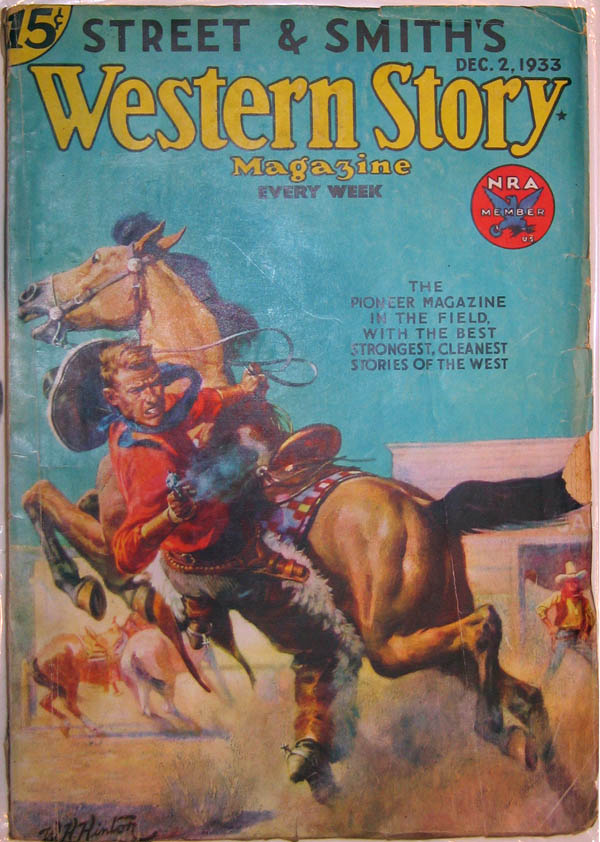
Hinton also liked the subject matter. He had made sketches at Buffalo Bill’s Wild West performances as a youth, and he took an avid interest in all things Western: cowboys, Indians, pioneers, mountain men, outlaws, horses, dramatic landscapes, and wildlife. His covers are very cinematic, with plenty of action and guns, just like in the movies that were increasingly being issued by Hollywood. The cowboys are always square-jawed and tough, frequently chasing or being chased by another man, performing improbable stunts.

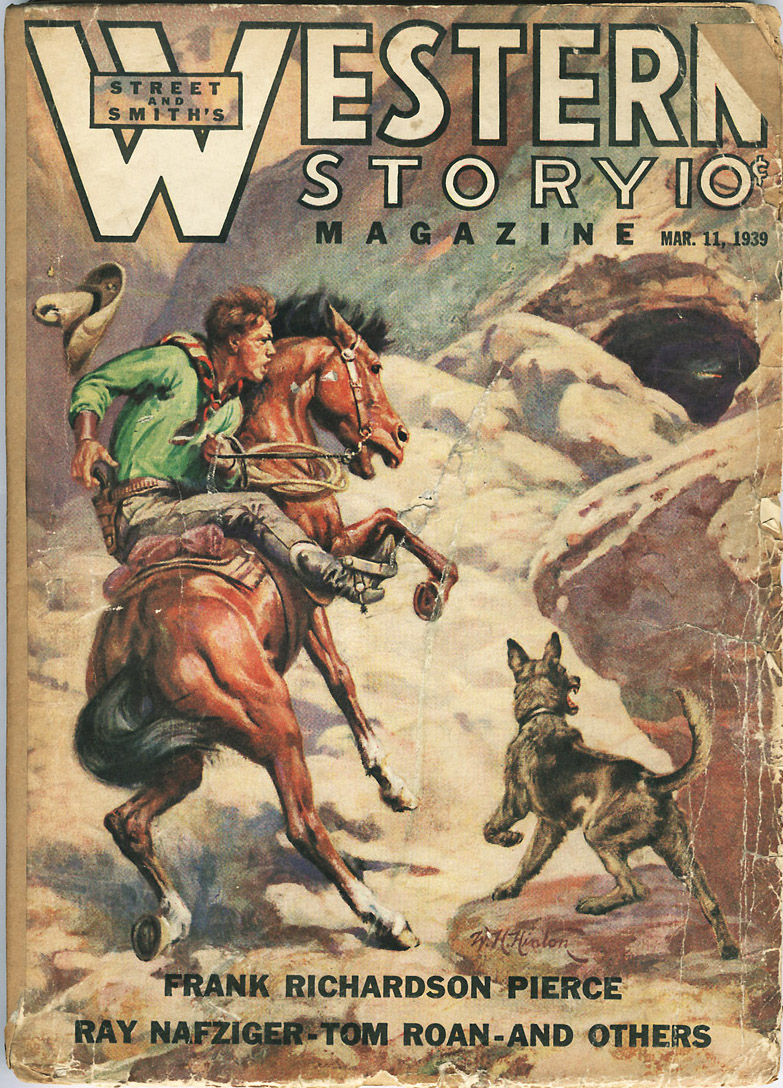
Images above courtesy of Steve Kennedy
Because he disdained working from photographs, Hinton’s imagination took over when drawing horses. Very little changed between his initial idea, sketched out in thumbnails, and the final composition. Horses appear on their backs, or in the air, or twisting wildly, or having spectacular wipeouts.
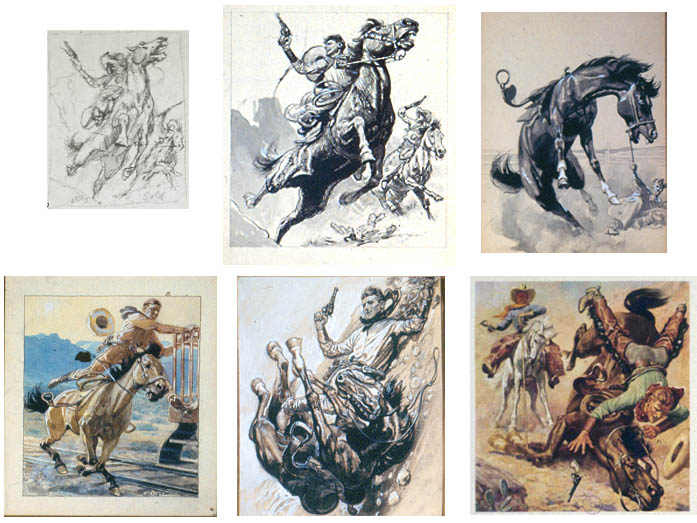
Some of Hinton’s best work was his black and white interior fiction illustration; he may have completed as many of these as he did covers, which number at least 25.

In 1947 Hinton decided to create something for his own pleasure. Instead of simply painting what he wanted and keeping it to himself, he arranged to provide a set of covers for Ziff Davis’ Mammoth Western, with the stipulation that the originals be returned to him after they had been printed. It was excellent timing: Hinton wanted to paint Native American tribes to go with his collection of Indian artifacts, and the editors at Ziff Davis wanted to bring attention to the plight of the Navajo, who were then starving despite many of their community being entitled to GI’s benefits. The Navajo had served as “code-talkers” during the War, a key component to the survival of the United States Army troops in the South Pacific. Hinton, who had long admired native cultures, supported this political effort to get the Navajo some aid and to get all Indians the vote.
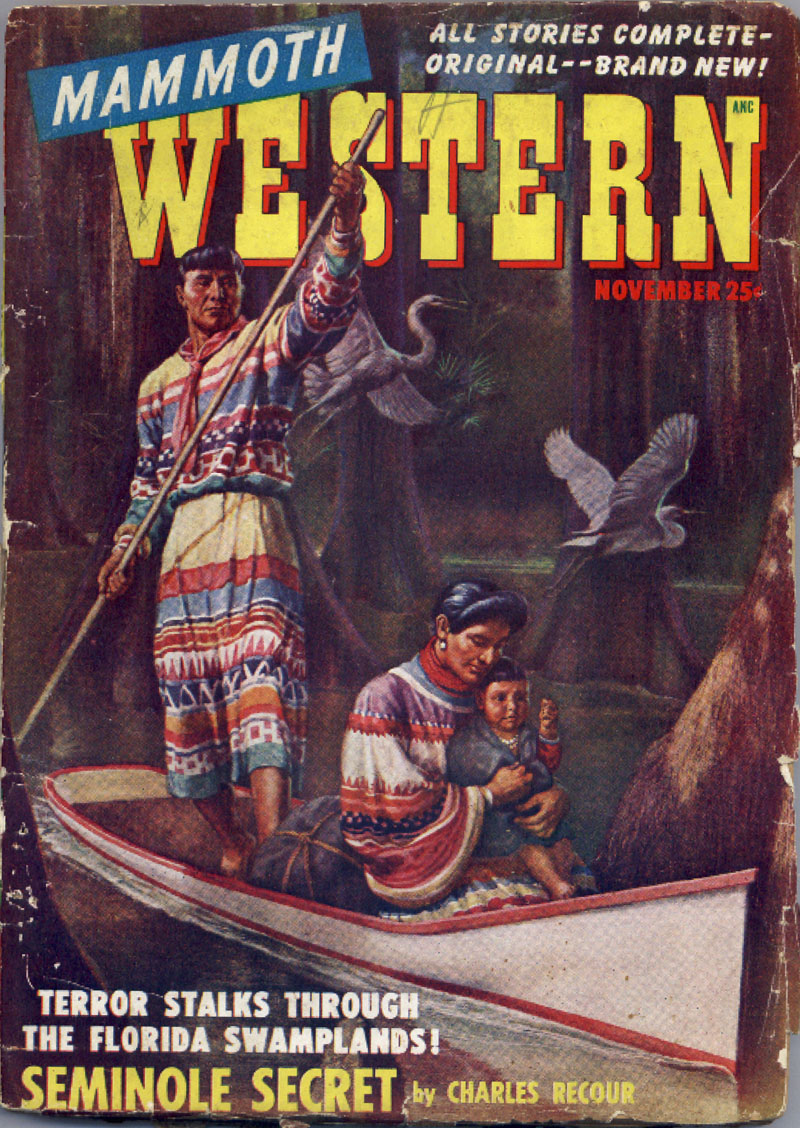
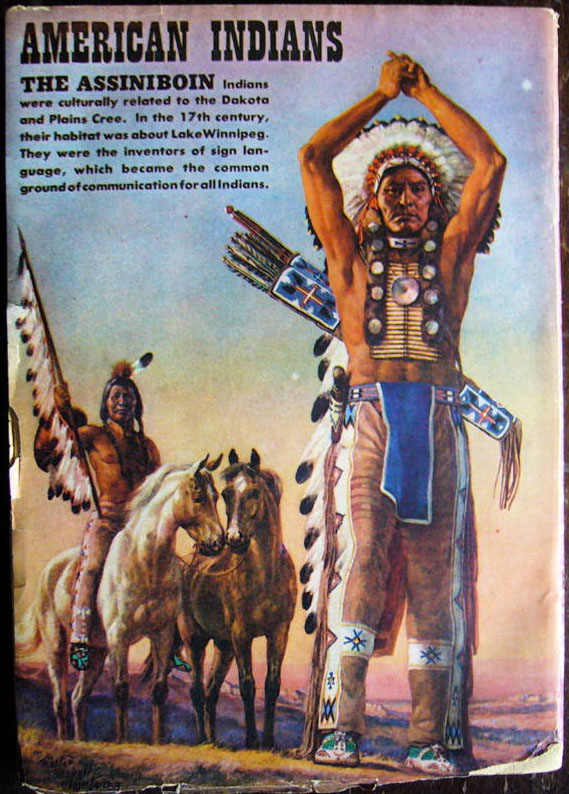
Hinton lavished attention on this project, researching traditional costumes and cultures, rendering each as carefully as he could. He also supplied brief write-ups on the peoples he depicted, which appeared superimposed over the image. Here is a close-up of the original painting used for the above cover, enlarged about three times.
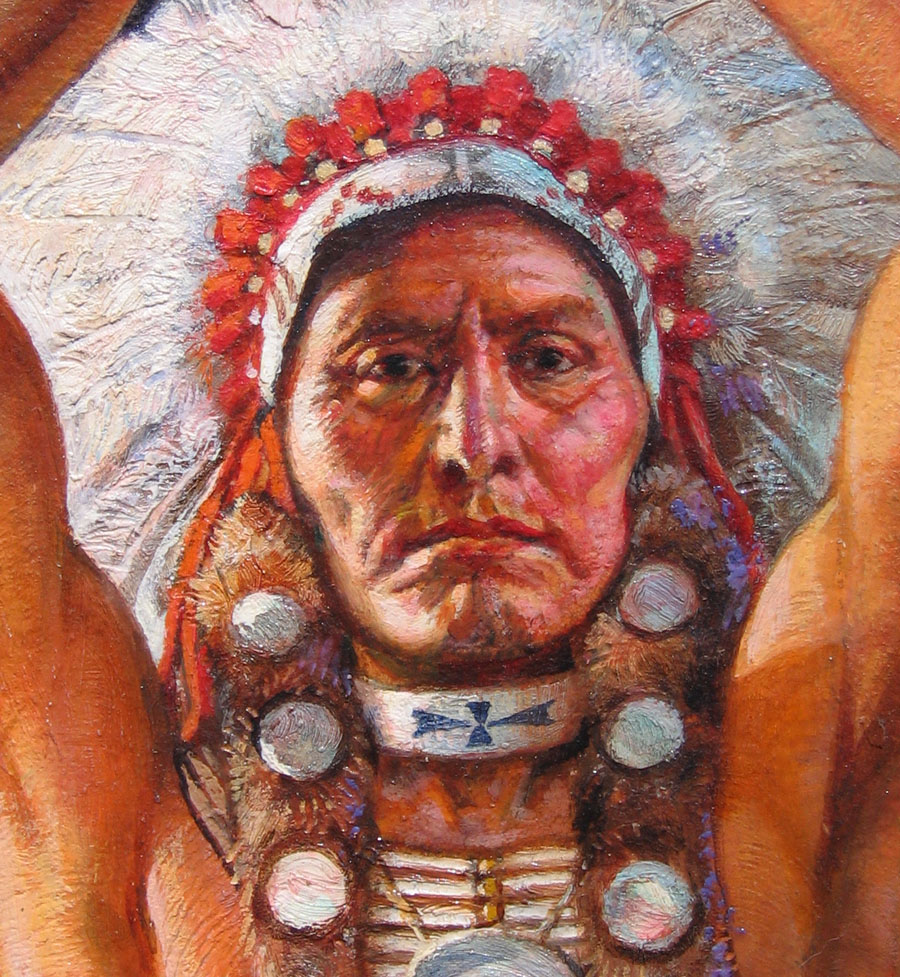
Image courtesy of "Private collection"
Prominently featuring Hinton’s work and calling attention to it in their editorials, the editors’ appeal to the readership of Mammoth Western and the rest of their titles resulted in an enormous positive response. The scandal of the neglected Navajo was picked up by newspapers, and food and other relief was sent to them immediately. Soon after, Mammoth Western printed the following telegram of thanks from Tonto, Will Rogers, the Indian Citizens League, and others.

Hinton was very proud of this series, and he often took guests in his home through them one at a time, telling all about each. There are in total ten paintings in the set, and they will be on display for the first time this December and reproduced in the exhibition catalog. Those that were printed by Ziff-Davis in 1948 usually appeared on the back cover. At least one was used on the front, with a story written to accompany it. Contrary to popular belief, illustration does not always come as an afterthought to the writing!
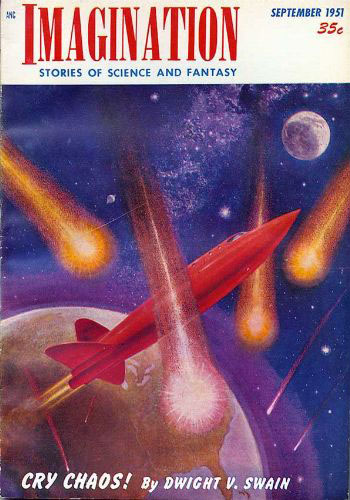
Hinton did not limit himself to Western topics for pulps. He completed at least three science fiction pieces, and a few romances – which I have still to locate. They are supposed to be for Love Story – tell me if you have seen them!
Concluded tomorrow...
* Jaleen Grove's critical biography of Walter Haskell Hinton, published by the Ewing Gallery at the University of Tennessee, began as a fairly brief exhibition catalog essay. It grew into a 96-page book when a wealth of interviews and primary documents were obtained. The book differs from this series on Today’s Inspiration in that it explores key issues in the cultural production of commercial art, both the troubling aspects of mass-culture images and the material pleasures of them.
Because it is a non-profit educational endeavour for which she volunteered her time, Jaleen would like to invite you to advance-order a copy or donate to the project, to help with production and distribution costs.
* Walter Haskell Hinton official website
Enjoyed the pulp western covers. Thanks!
ReplyDelete